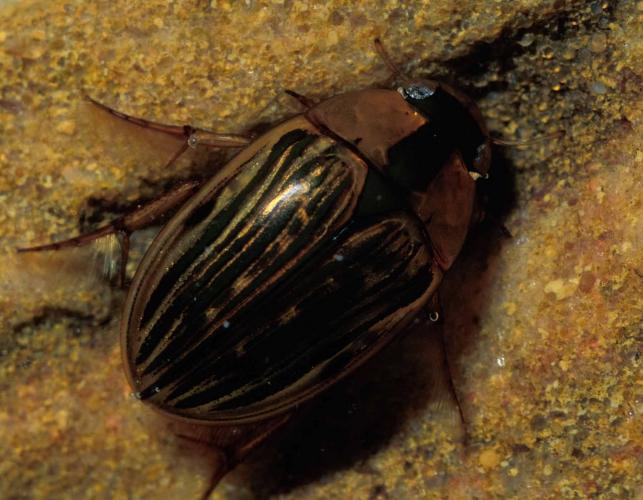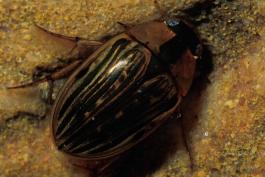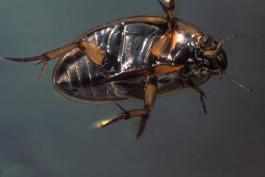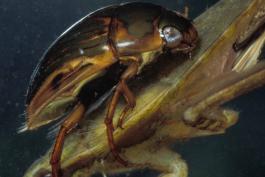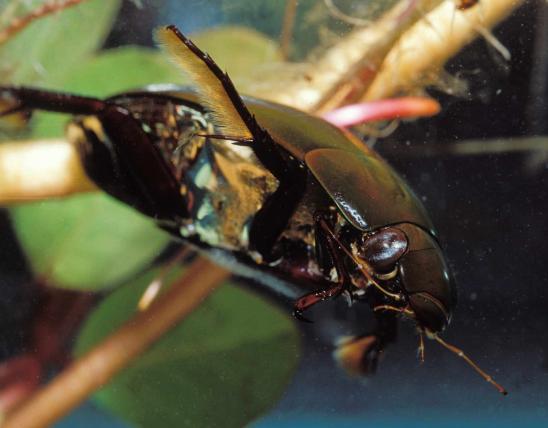
Streamlined, oval aquatic beetles with a smooth but often keeled back. Usually black or brown, sometimes with patterns. Antennae clubbed, short, often held out of view; the palps (tactile appendages near the mouth) are longer, antennae-like. Beneath, a sharp spine often runs down the body past the thorax and over the abdomen. Hind legs usually flattened, with a fringe of hairs. Hydrophilids swim by moving their legs alternately and take air from the surface with their heads out of water.
Larvae wormlike, segmented, brownish, rather translucent, with 6 legs at the front of the body. The pinching mouthparts have “teeth” in addition to the pointed tips. They swim quickly and well.
Similar species: Predaceous diving beetles (family Dytiscidae) usually have a more rounded, less keeled back, never have the belly spine, and have threadlike, not clubbed antennae. Dytiscids swim by moving hind legs in unison, instead of alternately, and take air from the surface by poking their tails upward.
Length: adults to about 1½ inches (varies with species).

Statewide.
Habitat and Conservation
A few hydrophilids live on land, but most are aquatic, preferring fairly shallow water. The adults can fly and sometimes end up in swimming pools and buckets. They’re also attracted to lights at night. Many aquatic insects trap air against their bodies to stay underwater longer. Hydrophilids come to the surface head first and use their antennae to quickly pump air against their bellies. Other insects stick their tails out of water and draw air beneath their wings by lifting them slightly.
Food
The larvae of water scavenger beetles are predatory, using strong, pincher-like mouthparts to capture and devour a variety of aquatic invertebrates such as mosquito larvae and snails. The adults, depending on the species, can be predatory or can be scavengers, eating algae or dead or decaying plants or animal materials.
Life Cycle
Like other beetles, water scavengers begin life as eggs, then hatch and go through a number of larval stages, eating hungrily, and molting as they grow. A final molt renders them winged, sexually mature adults, which mate and lay eggs. Many species can create a squeaking or chirping sound; this may help them attract partners.
Human Connections
“Can they bite me?” Just about anything with jaws can bite! As with other aquatic insects, these beetles are a healthy component of ecosystems that produce fish, waterfowl, and many other animals we enjoy. Some water scavenger beetle larvae reportedly cause problems at fish hatcheries.
Ecosystem Connections
The predatory larvae and adults play a role in controlling populations of the many animals they eat, including mosquitoes. Adults that scavenge help recycle nutrients into forms that plants and other organisms can use.
